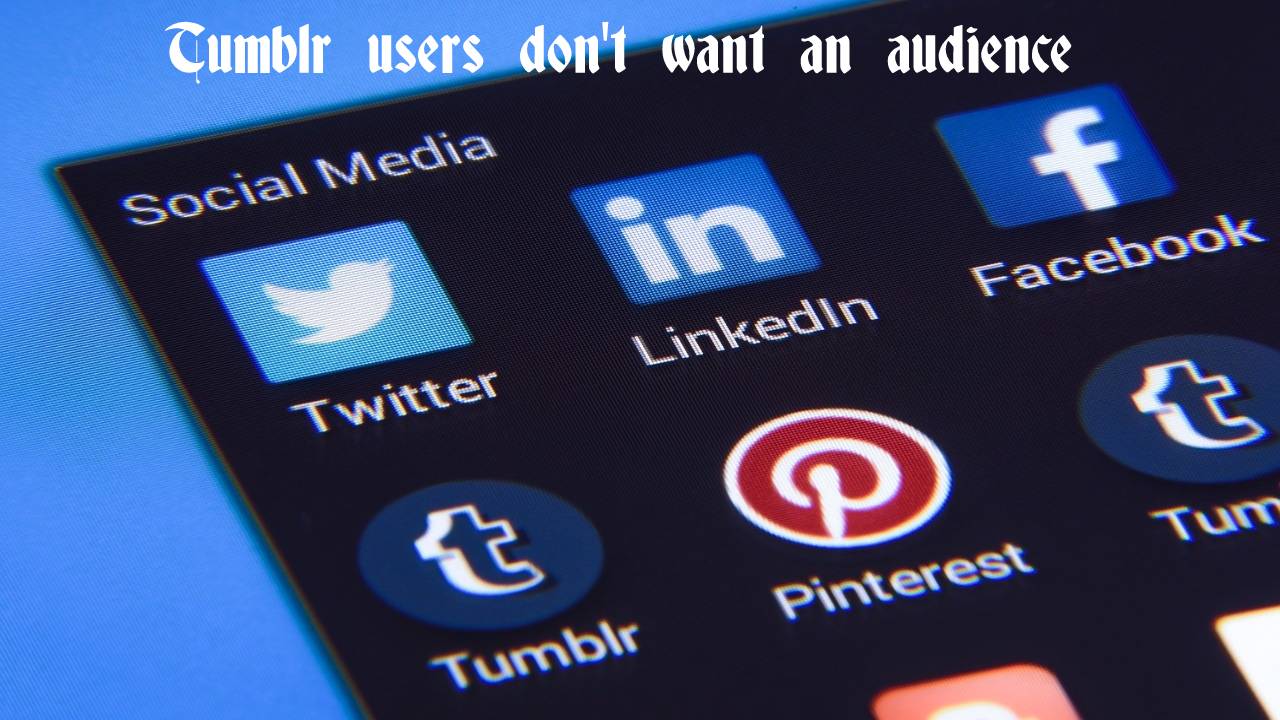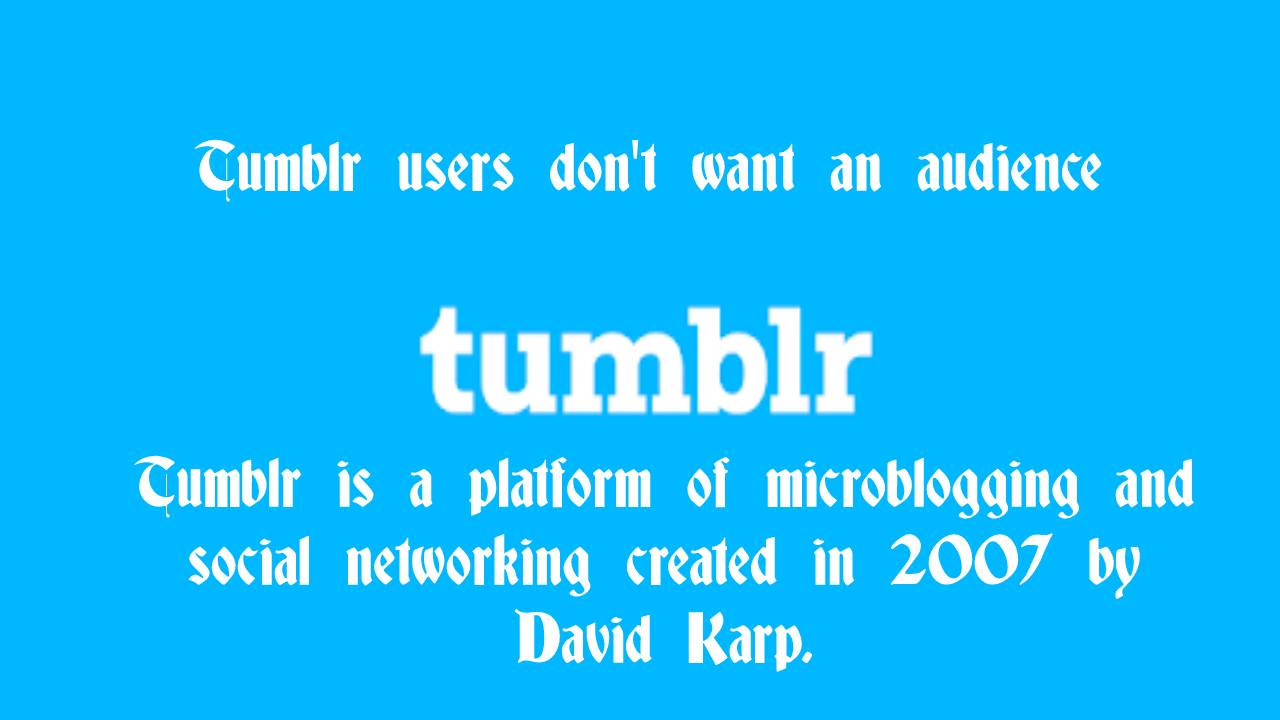What is Tumblr?
Tumblr is a platform of microblogging and social networking created in 2007 by David Karp.
The main features that distinguish this platform from similar ones are a well-thought-out interface and ample opportunities for using individual settings (customization).
A unique subculture was formed here, popular primarily among adolescents.
But in the Russian-speaking segment of the Internet, Tumbler still has fewer users than other countries.
Along with its many advantages, the social network also has several disadvantages, for example, the lack of some essential options.
In terms of SEO, there is a return on Tumblr, but not too much. In 2013, this site overtook Instagram and gained wide popularity.
Tumbler got interested in Yahoo! As a result, Yahoo bought it on May 18 for over a billion dollars.
This social network can repost, exchange information with other users, and rate publications.
Tags and content calendar templates make it easy to find the content you want. A wide variety of interests are represented here – art, cooking, music, politics, and much more.
Who Uses Tumblr?
- Tumblr is free, so everyone, from celebrities and business people to politicians and teens.
- Even businesses use Tumblr to reach a wider audience and drive brand and sales growth.
Features of Tumblr
- Tumblr is a social blogging dais that allows manipulators to upload multimedia messages, follow other users with similar interests, and be part of the community.
- As of early 2017, there were 341 million Tumblr blogs and a billion blog posts.
1. Avoid reposting long posts as links
- Tumblr is programmed to repost long posts in the form of links. But some of your subscribers may want to read the entire post in the dashboard without being redirected to another page.
- The solution is simple: rewrite the message as text instead of a link.
2. Allow users to reply
- At the end of your message and the bottom, there will be the “Allow people to reply” option.
- Enable this option by checking the box, and your subscribers will be able to reply to your message.
3. Edit posts and tags
- By providing the ability to bulk edit posts, Tumblr has made it easy for its users to add a specific tag to all of their posts.
- From the control panel, look on the right side of the page and click “Record.” In the “Customize” section, a “Bulk Publish Editor” link appears.
- Enter (Click) on the link, and you will be able to edit/add tags and delete posts in one go
4. Subscribe and Share buttons
- Customize the Subscribe and Share buttons.
- Go to Buttons to view customization options for the Follow and Share buttons.
- After selecting a design, the code appears. Now open Tumblr in a new tab, go to Settings and click Customize Theme.
- You will be accelerated to a page where you can edit the HTML. Please copy the code for the Follow and Share buttons and paste it into your Tumblr theme code.
What are the young and restless on Tumblr doing all day?
- The answer is more complex than it might seem at first glance and speaks of the continued importance of the public web in the era of walled gardens.
- For a long time, I assumed Tumblr as a themed blog with images:
- In other words, self-expression through a set of pictures of a specific type of thing.
- So I thought the iconic tumblers were neatly organized things: Girls in Yoga Pants (NSFW) and Food on My Dog.
- Tumblr gives the impression that this is the primary use case for its service, highlighting this Tumblog type almost exclusively in the Tumblr directory.
- All wrong. Or rather, some of these tumblers are necessary for the system to function, but surprisingly, only a tiny fraction of them.
- Tumblr got huge because it is anti-blogging
Tumblr users don’t want an audience
- They don’t want to be found other than a few close friends with whom they openly share one of their Tumblogs.
- So Tumblr’s notoriously weak search function suits most of its user base.
- Tumblr provides its users with the oldest online privacy control strategy: security through obscurity and multiple pseudonymity.
- Its users prefer a coarse-grained scheme that they can easily understand, rather than complex, granular privacy controls like the one provided by Facebook, which takes a lot of time and patience.
- To quote Sweet Brown, no one has time for that.
- Tumblr proves that the problem is not so much in the public or private as whether you can be identified and identified by people who know you in real life.

Tumblr’s content falls into three categories
1. Photos of the daily life of young people
- Studying, shopping, walking with friends. Many of these photos are from Instagram or the Tumblr mobile app, which is pretty good right now.
2. Funny memes and gifs
- They find funny memes and gifs on Tumblr and share with their friends again.
- A teenage friend of mine recently told me that he tries to post on his Tumblog hourly, which requires endless searches on other Tumblogs for content to reblog.
- Fortunately, the Tumblr dashboard is explicitly designed with this goal in mind: consume a lot and run over efficiently.
- The themed photobloggers add value to the ecosystem; that’s why we see Tumblr encouraging the distribution of “editable” content like Grammy Live-Tumbling.
3. Pornographic and near-pornographic collections
- It is for personal use usually under a different pseudonym.
- (Hint: searching for many keywords at 11:00 pm gives very different results than the exact search at 11:00, and there is an NSFW option if you don’t want to see it).
- For the latter two, Tumblr offers full support for animated GIFs is a fundamental difference from the static environments of Facebook, Twitter, Instagram, and even Pinterest.
- Ten seconds of a jet-fired shot – or intercourse – is significant in terms of expressive power.
- Plus, GIFs are much easier to view on mobile than videos, and so far, big content owners have made little effort to get rid of them with the DMCA.

